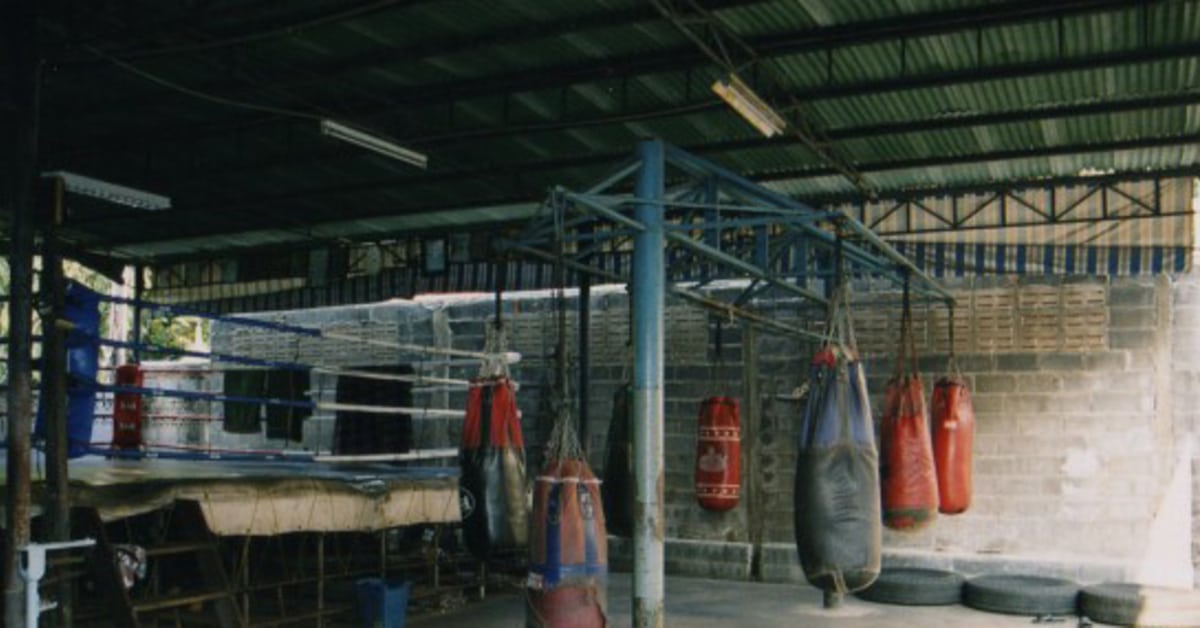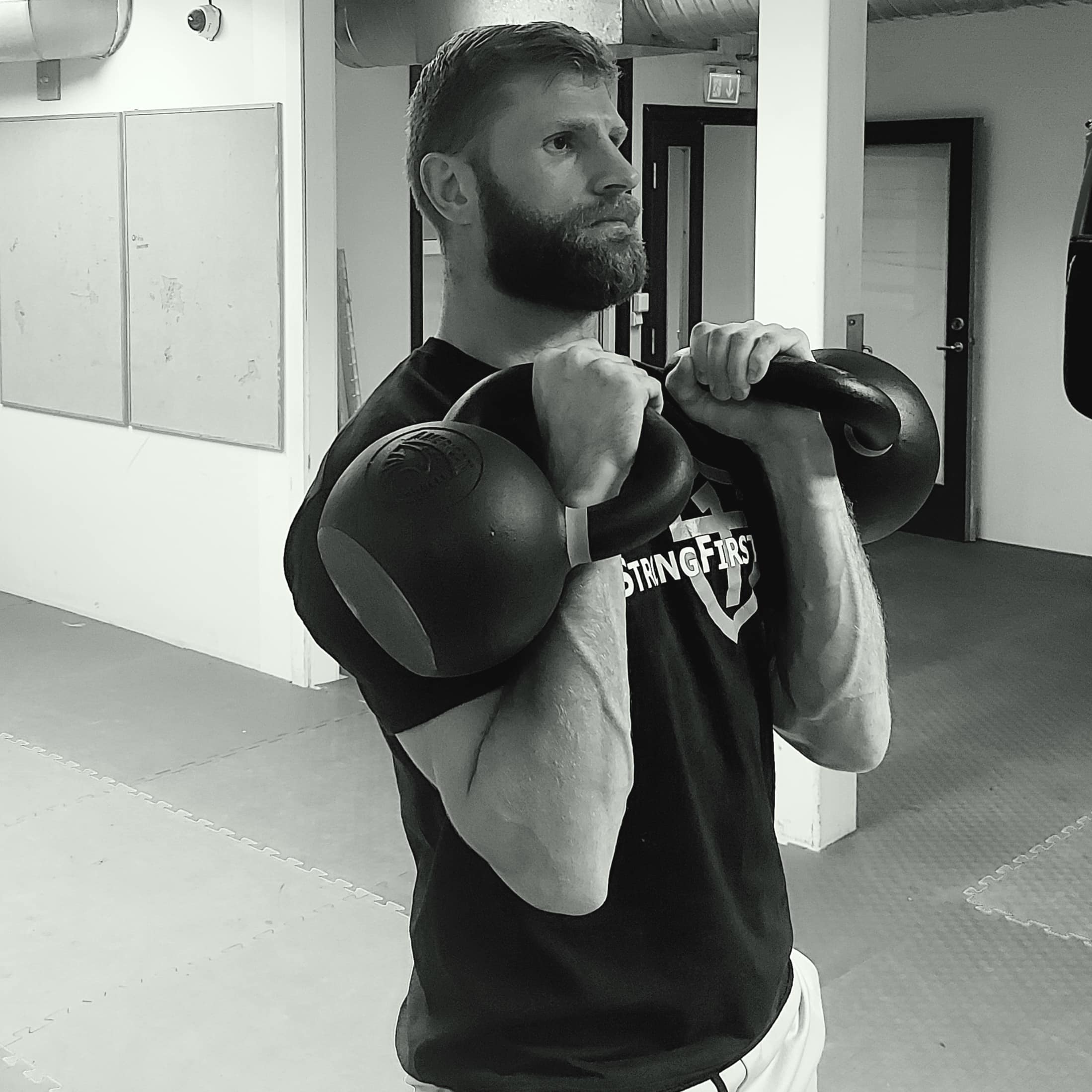Jocky Gym: The Epicentre of Muay Femur Brilliance
In the bustling streets of Bangkok, where the echoes of tradition blend seamlessly with the pulse of modernity, there exists a fortress of Muay Femur excellence: Jocky Gym.
Nestled amidst the chaotic rhythm of the city, this unassuming establishment has long been revered as a breeding ground for stadium champions. From the legendary feats of Somrak Khamsing to the elusive artistry of Saenchai and Lerdsila, the walls of Jocky Gym have witnessed the rise of countless Muay Thai Giants. Yet, beyond its illustrious history lies a tale of resilience, evolution, and the enduring spirit of a community united by their passion for the art of eight limbs.
The Birth of Jocky Gym
Jocky Gym was created in 1963 in the Bang Pho district of Bangkok by Somat Hong Sakoun. Somat was a muay femur (technician) during the 1960s in Thailand, and later worked as a consultant for Thai radio stations and TV channels. In addition, he was a Muay Thai promoter in the city alongside the legendary Songchai Rattanasuban.
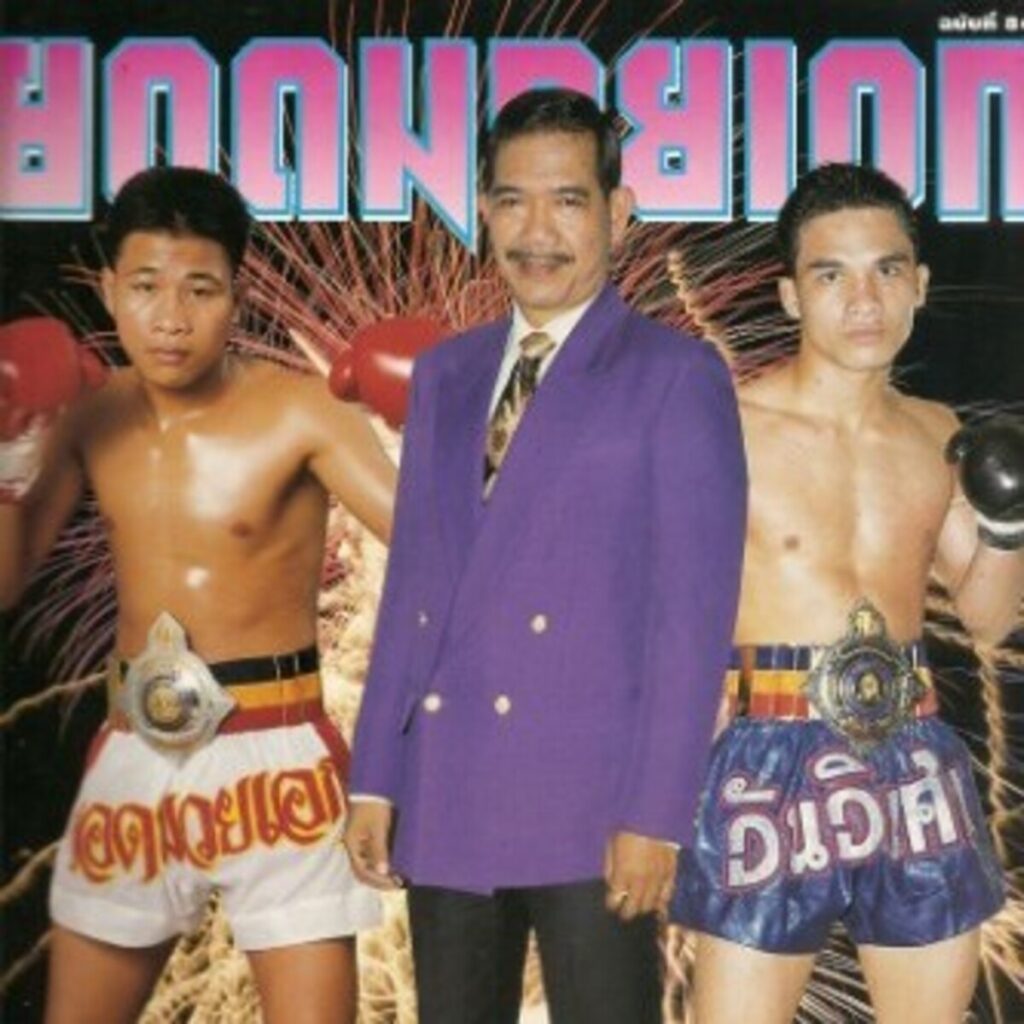
Somat’s house was located a stone’s throw away from the gym. The first floor was reserved for Somat, while the ground floor of the house served as living quarters for fighters.
The gym was originally named SitSorForYor Gym. However, due to the success of Jocky Sitkanpai in the 1970s, the gym’s name was changed to Jocky Gym in honour of the gym’s greatest student. Jocky was the first student to bring home a major stadium belt, winning the Thailand Bantamweight title and the Rajadamnern Bantamweight title in 1974 and 1975, respectively.
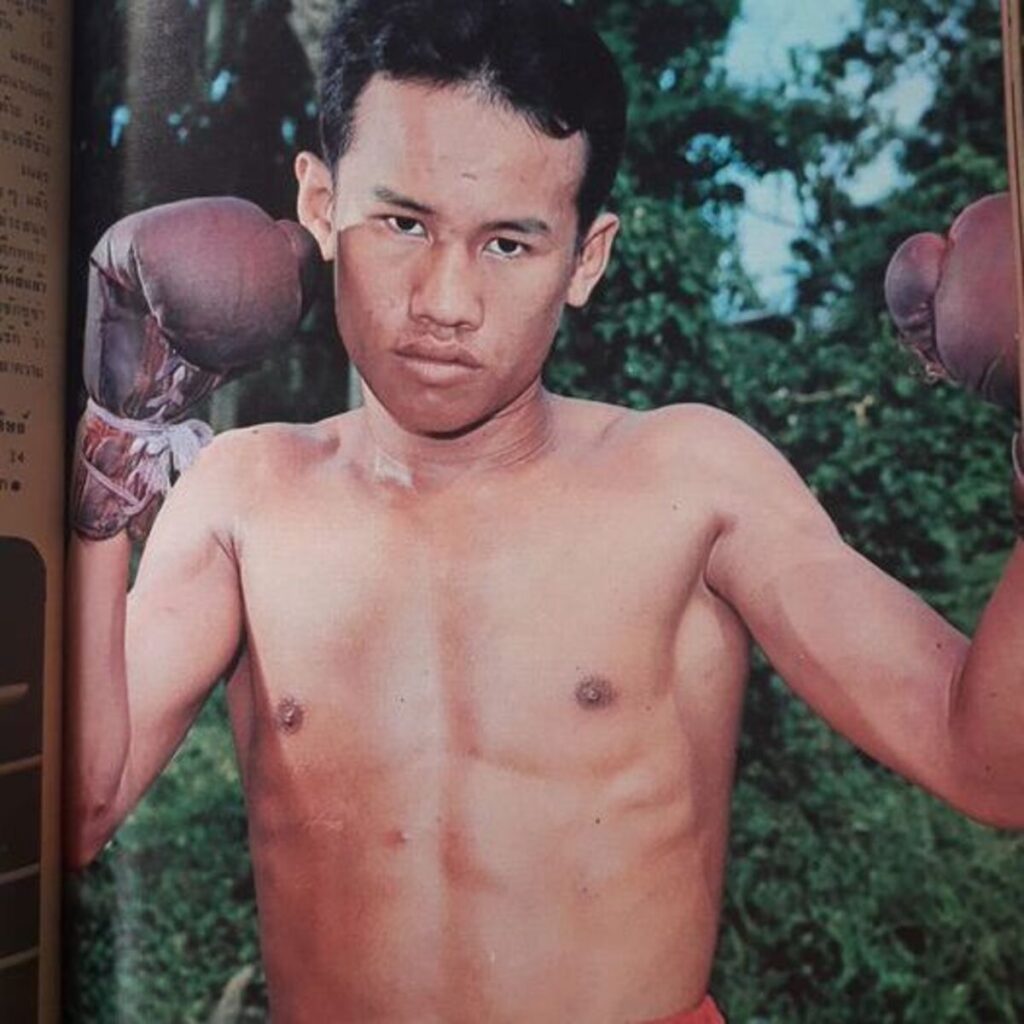
Jocky defeated a long list of elite fighters from that era such as Nongkhai Sor Prapatsorn, Pudpadnoi Worawut and Sagat Petchyindee.
Notable Jocky Gym Fighters
The following Thai fighters have, at some point, trained at Jocky Gym.
- Somrak Khamsing
- Robert Kaennorasing
- Rolex Kaennorasing
- Silapathai Jocky Gym
- Wanwiset Kaennorasing
- Saenchai P.K.Saenchaimuaythaigym
- Lerdsila Chumpairtour
- Sonkom Jocky Gym
- Kaoklai Kaennorasing
- Chaowarit Jocky Gym
- Patong Jocky Gym
Pipa
Pipa was an Issan native who began training at Jocky Gym in 1981 at the age of 18. He was a muay femur who came from a village near Udon Thani and had fought in events all over Issan, winning the regional title.
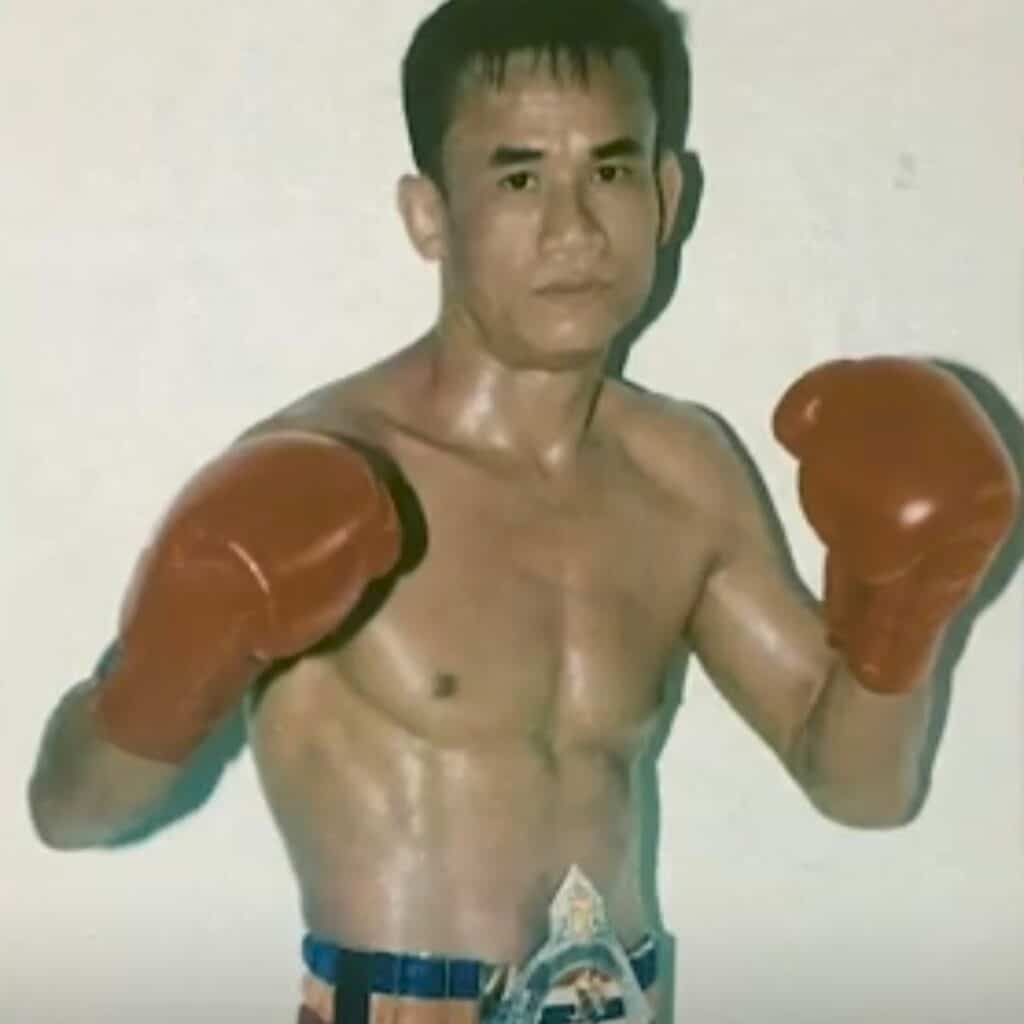
Pipa spent his entire career training and fighting out of Jocky Gym, right up until his retirement from professional Muay Thai at the age of 29. He won 110 fights from a total of 150 during his career, but never managed to make it to the pinnacle of Muay Thai and win a Rajadamnern or Lumpinee title.
Soon after retiring from fighting in 1991, Pipa became a trainer at Jocky Gym. He proceeded to teach the femur style to all of his students, regardless of their background in Muay Thai; if an aggressive fighter arrived at the gym, Pipa converted him to femur. If a clinch fighter showed up, that fighter became a ‘clinch femur.’
In fact, all the trainers at gym taught the femur style. Jocky Gym had become a femur institution.
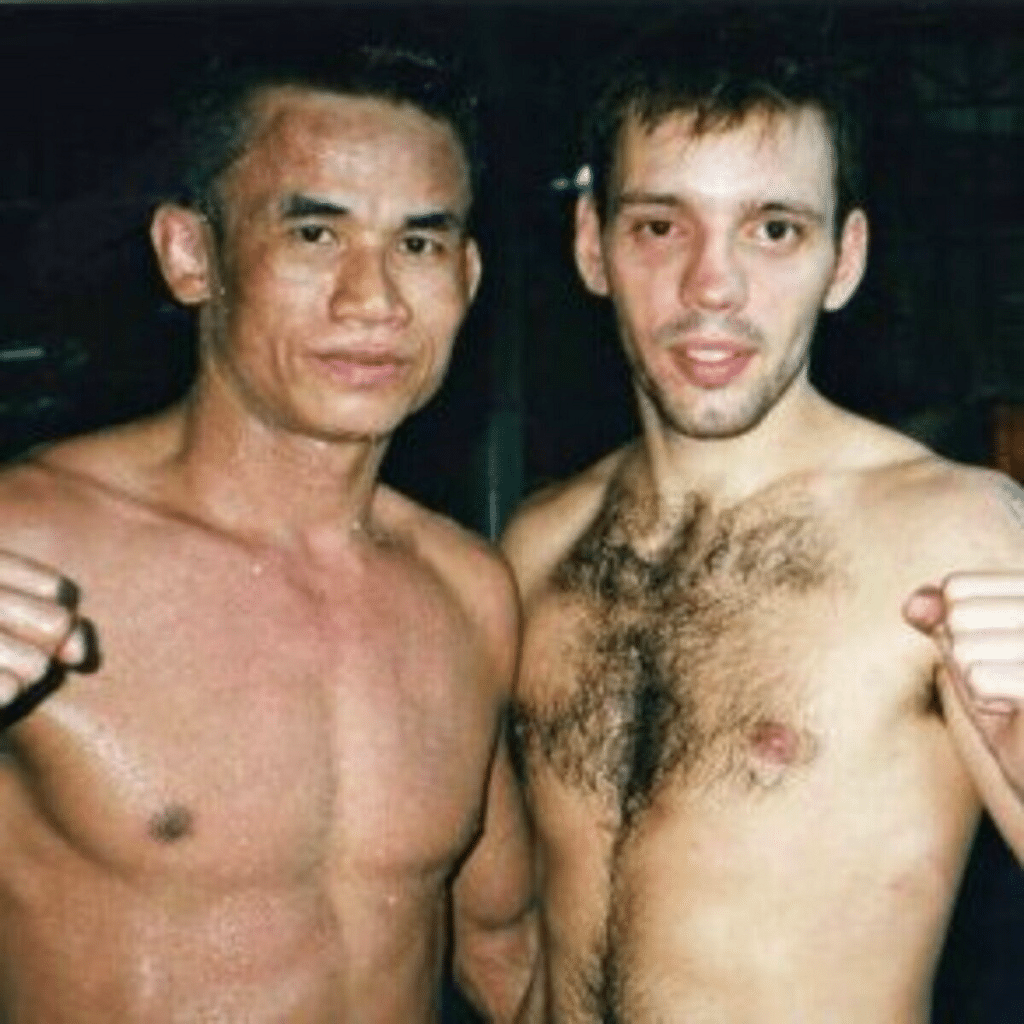
The Jocky Gym Philosophy
During the 1980s/90s/00s, Jocky Gym served as a parent gym for several ‘feeder’ gyms in Khon Kaen (Northeast Thailand) such as Kaennorasing, Chumpairtour and Sit Chang who would send their fighters to Jocky Gym. It was a network that enabled fighters from Issan to move to Bangkok and progress in the city’s biggest stadiums.
There was also an inflow of foreign nak muay at the gym, all eager to absorb the intricate femur style that had been meticulously transmitted across generations. The most well-known foreigners that trained at the gym during the 1990s are Jean-Charles Skarbowsky, Dany Bill and Stephan Nikiema.
The gym itself was bare. They did not own lots of equipment; instead, the fighters would spar lightly with no shin guards or gloves. Pipa was adamant that this type of training would develop their ability to read the fight, make informed decisions, and strategically position themselves in the ring.
This type of tactical awareness went beyond the individual’s technical skills, encompassing a deep understanding of fight dynamics, opponent analysis, individual analysis and the broader tactical strategy employed by the fighter.
Though training was uniform, each fighter developed a unique style reflective of their high fight IQ. They understood how to implement their own game plan, yet they were equally skilled at problem-solving and adapting their approach as the match unfolded. They did not merely follow the instructions of their trainers, but crafted their own techniques, later refined by trainers to shape their identity.
So although each fighter shared a common thread – the gym’s overarching femur style – they each developed their own distinct style within it, tailored to their strengths and weaknesses. Independence was key in these fighters’ Muay Thai education.
1989 Rajadamnern Stadium 105 lbs champion
1991 Rajadamnern Stadium 126 lbs champion (5 defences)
1993 Rajadamnern Stadium 130 lbs champion (1 defence)
Jocky Gym’s Lasting Contribution
Pipa trained numerous legendary fighters throughout his time at Jocky Gym, such as Somrak, Robert, Chaowalit, Kaoklai, Saenchai and Lerdsila. Among the long list of elite fighters, one fighter stands out as the finest talent Pipa has ever mentored – Silapathai Jocky Gym.
In this interview with Humans of Fighting, Pipa referenced Silapathai’s ring intelligence and vision as particular distinctions.
1991 Rajadamnern Stadium 108 lbs champion (one defence)
1994 Rajadamnern Stadium 122 lbs champion (one defence)
Jocky Gym’s legacy continues under the ownership of former student Jean-Charles Skarbowsky. In this new chapter of the gym’s story, while the era of churning out Thai champions may have passed, the reinvigorated facility under Jean-Charles’ guidance promises to be a place where the current generation can pave their own way to success, whatever their life goals may be.
As the sun sets on one era, a new dawn emerges, brimming with opportunities for individuals to shape their futures within the hallowed halls of Jocky Gym.

